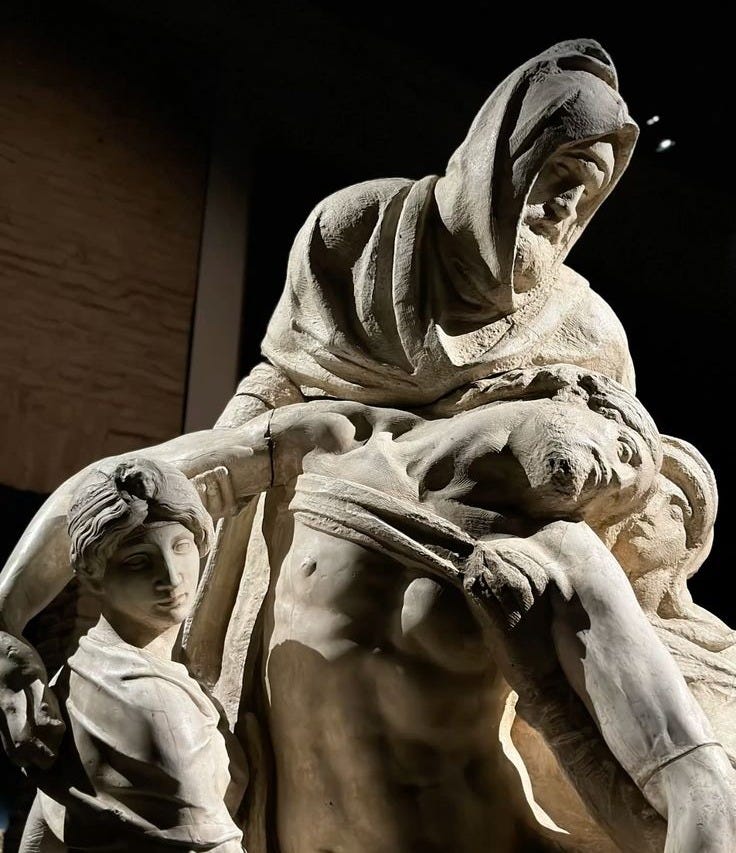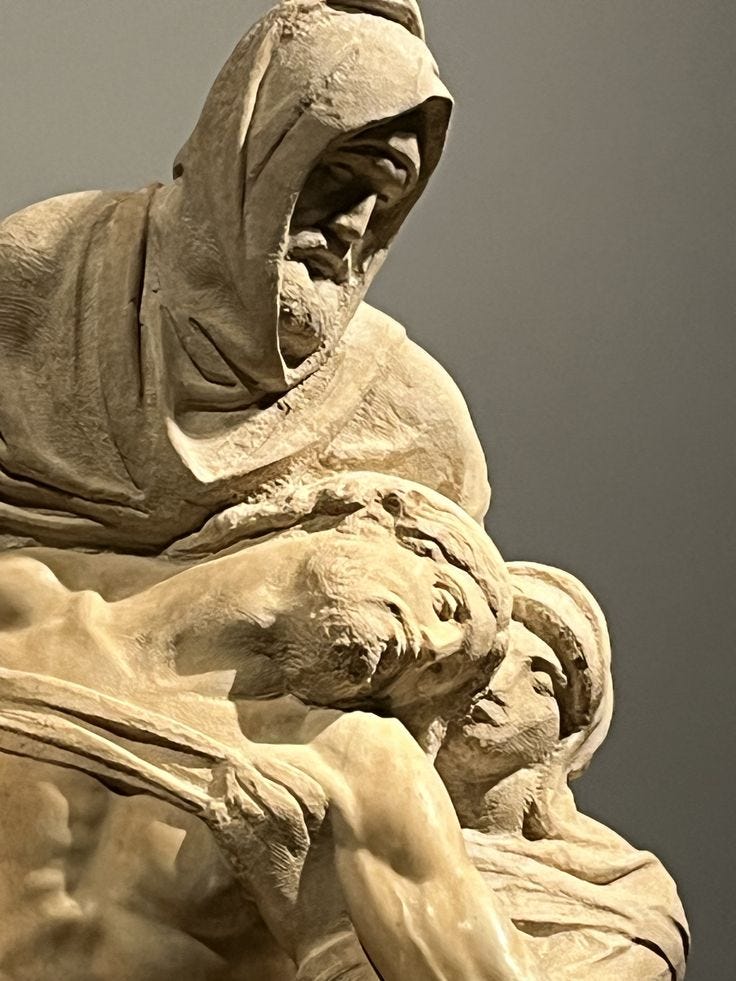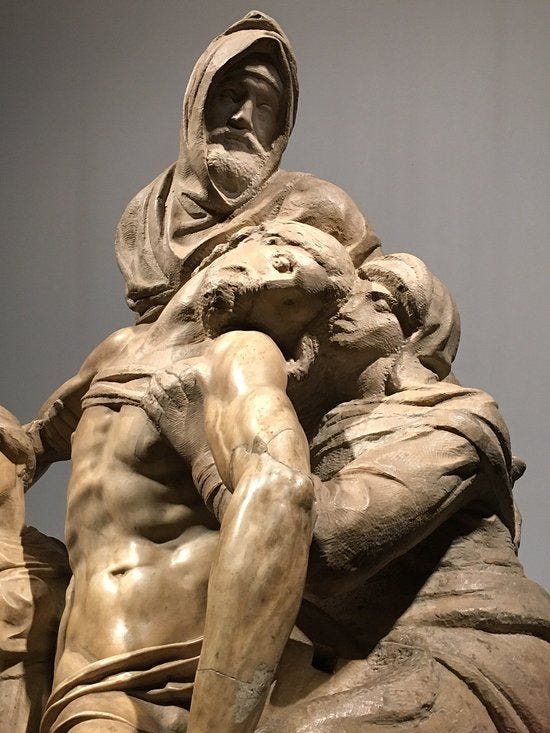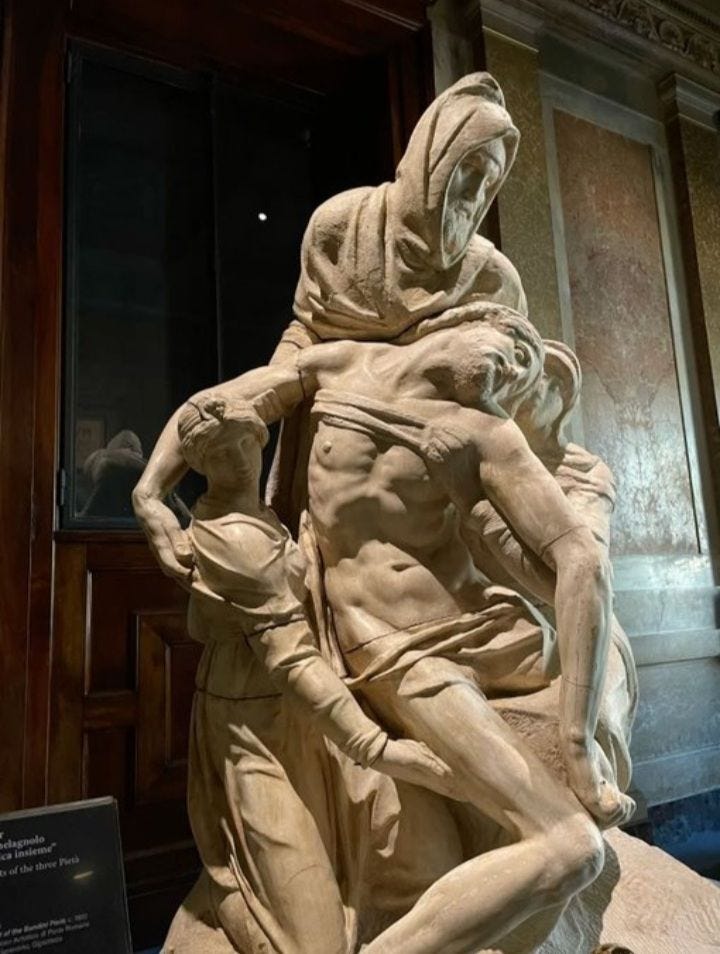Michelangelo’s Deposition, 1555
A Farewell
Near the close of his life, Michelangelo carved something not for the Sistine ceiling or the halls of Medici patrons, but for himself. The Deposition, begun around 1555, was meant to crown his own tomb. But it’s not grand, not triumphant.
It is raw. Quiet. Deeply human.
By now in his 70s, with David, the Pietà, and the Sistine Chapel behind him, Michelangelo had nothing left to prove.
The Deposition murmurs mortality. At its center: the collapsed body of Christ, held by three figures. One of them, Nicodemus, wears Michelangelo’s own face. He stares not up at heaven, but downward, heavy with sorrow and self-awareness.
Michelangelo, it seems, could no longer separate God from grief—or himself from his burden.
Gone is the ideal beauty of his youth.
These figures slump, their edges rough, their weight palpable. Michelangelo didn’t polish them to perfection. He left the marble scarred and unfinished—as if to say: this is the cost of a life spent shaping stone and chasing the divine.
And then he walked away.
Whether frustrated by a crack in the marble or consumed by doubt, he abandoned it.
Some say he tried to break it.
But the piece survives, imperfect and luminous in its incompletion. It doesn't feel like abandonment—it feels like surrender.
The Deposition isn’t just Christ being lowered from the cross.
It’s Michelangelo lowering his chisel. Laying down decades of ambition, perfectionism, and pain.
In this final gesture, he allowed himself what he denied for so long: imperfection.
Humanity.






What a genious Michaelangelo was. And this is heavenly written.
I visit this my favorite of all Michelangelo's works as often as I can. It is a very emotional peice. It's as if Michelangelo is surrendering to the true master in his eyes. If you are fortunate to see this in person stand in the next room beyond Donatellos Mary Magdalene, and look back upon the deposition for an even greater artistic perspective.. Thanks for a wonderful article.